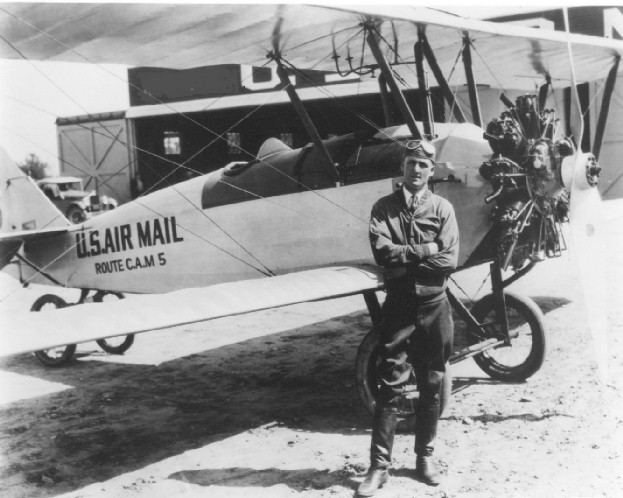HOWARD
HICKSON'S HISTORIES
[Index]
Aircraft Down!
Diamond A Desert - 1926
Varney Airlines pilot Franklin Rose revved
up the puny 160 hp engine (Swallows will be powered by a 225 hp Wright
J-4 in the future). His bi-wing Curtiss Swallow bounced slowly down the
runway and reluctantly picked up speed. Rose coaxed a little more speed
out of the engine and pulled back on the stick. The plane was finally in
the air with its cargo of several mail sacks. Banking to the north, he
was on his way to Pasco, Washington on the first leg of the tough Commercial
Air Mail Route 5 (CAM 5) - 487 miles over deserts and mountains.
It was April 6, 1926 and was supposed to be
Franklin Rose's big day. He was going to make history by flying from Elko
to Pasco, Washington as one half of the first commercial air mail flight
ever. Leon Cuddeback was flying the reverse flight. Rose had flown down
from Pasco a few days before to check out his aircraft and see if the air
field in Elko was ready.
He followed the road to Mountain City for
awhile then changed course for Boise, Idaho his first stop. Rose took note
of monster gray clouds coming in from the west and hoped he could miss
them but it was wishful thinking. His plane was suddenly surrounded by
buffeting winds and sheets of blinding rain. Then came lightning and thunder.
Franklin decided it was time to head down under the storm and that's when
his engine sputtered, coughed and quit. Dropping under the clouds he found
plenty of places to land in the Diamond A Desert, selected one and tried
to bring the Swallow down as gently as possible.
He almost made it until a wheel caught in
a bush causing the airplane to partially nose over. Unhurt, except for
a couple of bruises, he climbed down to look over the situation. The plane
couldn't be flown out, he would have to walk to the nearest ranch for help.
Out on the Diamond A buildings were scarce and he had no idea which way
to head.
Looking out over the countryside he saw two
men on horses galloping his way. Breathing a sigh of relief, he leaned
against the plane and waited for them. Rose felt he was lucky to have help
arrive so soon. A few minutes later the riders rode in, looked at the aircraft
then Rose, and pulled their guns and told him to reach for the sky.
Frowning, the pilot asked them what the heck
was going on. They told him they didn't cotton to Prohibition agents spying
on them.
Rose denied being a government agent and explained to the men
that he was flying air mail. One of riders spit on the ground and accused
him of looking for stills out in the desert.
Franklin asked them why they thought he was
trying to find illegal distilleries and they pointed to the U.S. painted
on the plane. If the situation hadn't been so serious Rose would have laughed
out loud. He patiently explained about air mail but they didn't buy it.
For almost an hour the pilot and the moonshiners
exchanged accusations and explanations until, finally, they believed him
and pointed him toward the nearest ranch house before riding off in the
opposite direction.
Poor Rose started walking. He walked for almost
two days before sighting ranch buildings. Luckily, the people living there
had a telephone and he was able to get through to Elko and tell them he
was okay. Officials called off the search parties that had been desperately
looking for the missing pilot and aircraft.
In the meantime, Leon Cuddeback made the record
book alone - he completed his flight from Pasco to Elko.

No, this is not Franklin Rose. It is Leon Cuddeback
who made history by completing the first commercial
air mail flight in the nation.
Photo courtesy of the Northeastern Nevada Museum.
Howard Hickson
December 1, 2002
©Copyright 2002 by Howard Hickson. Permission to
use is given but, if any portion or all of this article is quoted, proper
credit must be given.
[Back to Hickson's Histories Index]
|
